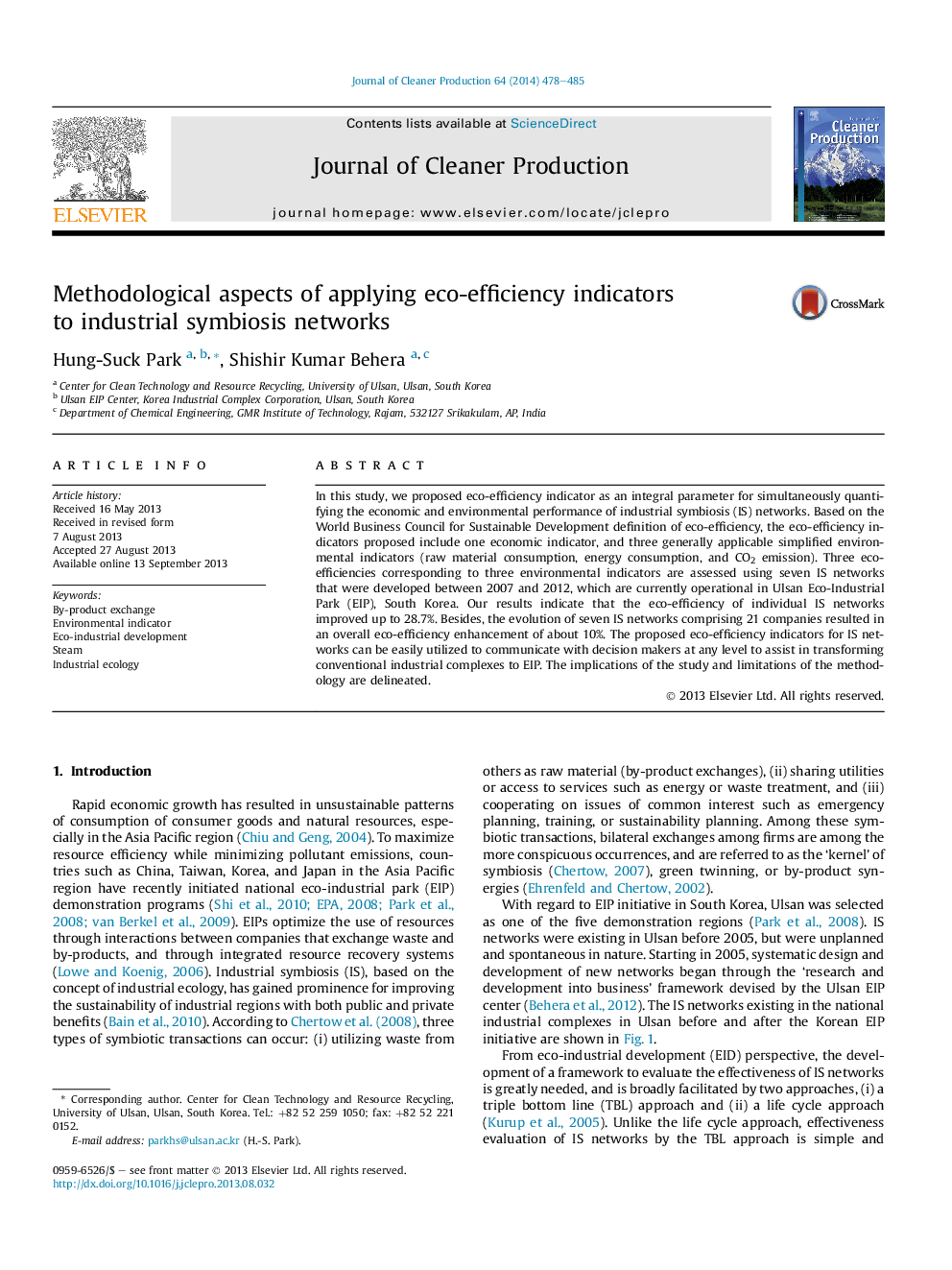| Article ID | Journal | Published Year | Pages | File Type |
|---|---|---|---|---|
| 8107071 | Journal of Cleaner Production | 2014 | 8 Pages |
Abstract
In this study, we proposed eco-efficiency indicator as an integral parameter for simultaneously quantifying the economic and environmental performance of industrial symbiosis (IS) networks. Based on the World Business Council for Sustainable Development definition of eco-efficiency, the eco-efficiency indicators proposed include one economic indicator, and three generally applicable simplified environmental indicators (raw material consumption, energy consumption, and CO2 emission). Three eco-efficiencies corresponding to three environmental indicators are assessed using seven IS networks that were developed between 2007 and 2012, which are currently operational in Ulsan Eco-Industrial Park (EIP), South Korea. Our results indicate that the eco-efficiency of individual IS networks improved up to 28.7%. Besides, the evolution of seven IS networks comprising 21 companies resulted in an overall eco-efficiency enhancement of about 10%. The proposed eco-efficiency indicators for IS networks can be easily utilized to communicate with decision makers at any level to assist in transforming conventional industrial complexes to EIP. The implications of the study and limitations of the methodology are delineated.
Related Topics
Physical Sciences and Engineering
Energy
Renewable Energy, Sustainability and the Environment
Authors
Hung-Suck Park, Shishir Kumar Behera,
